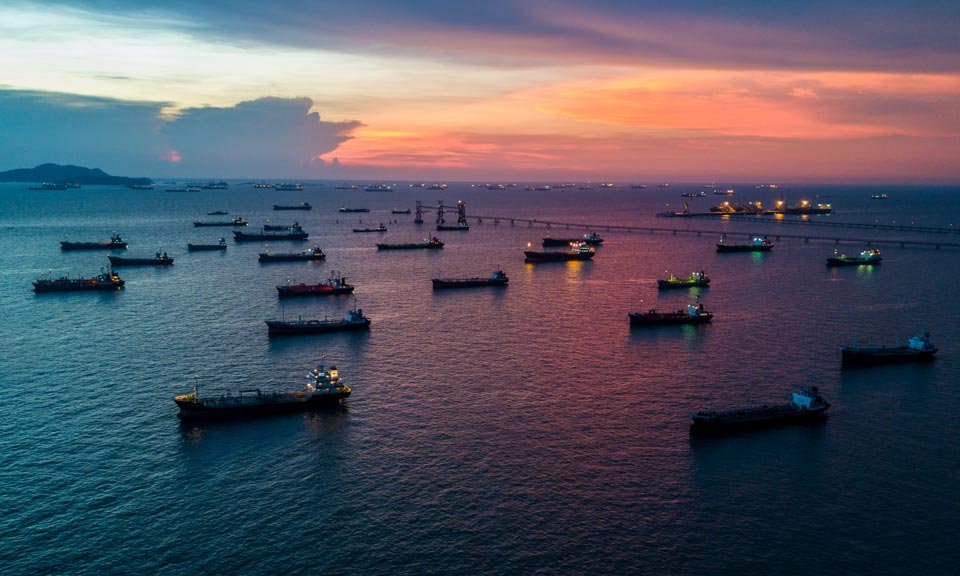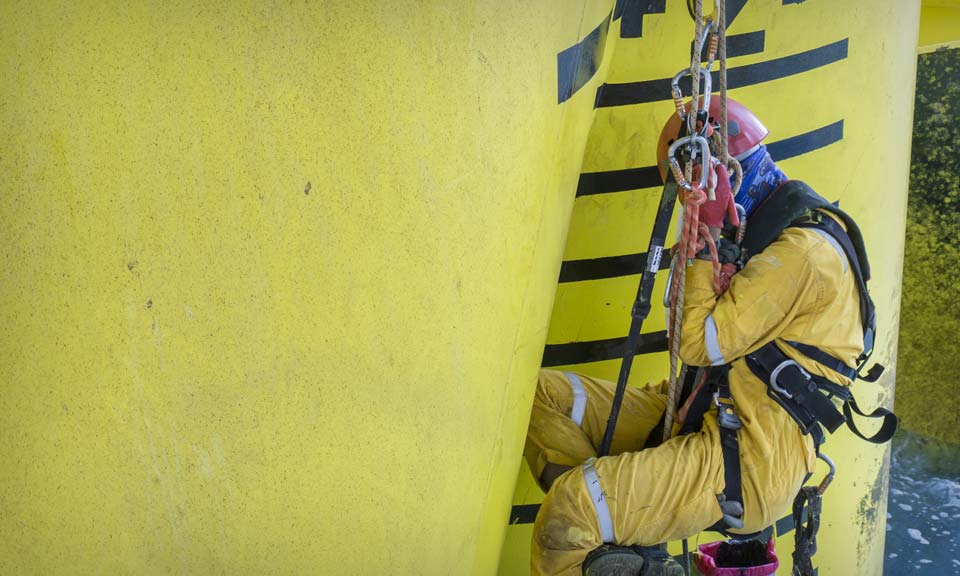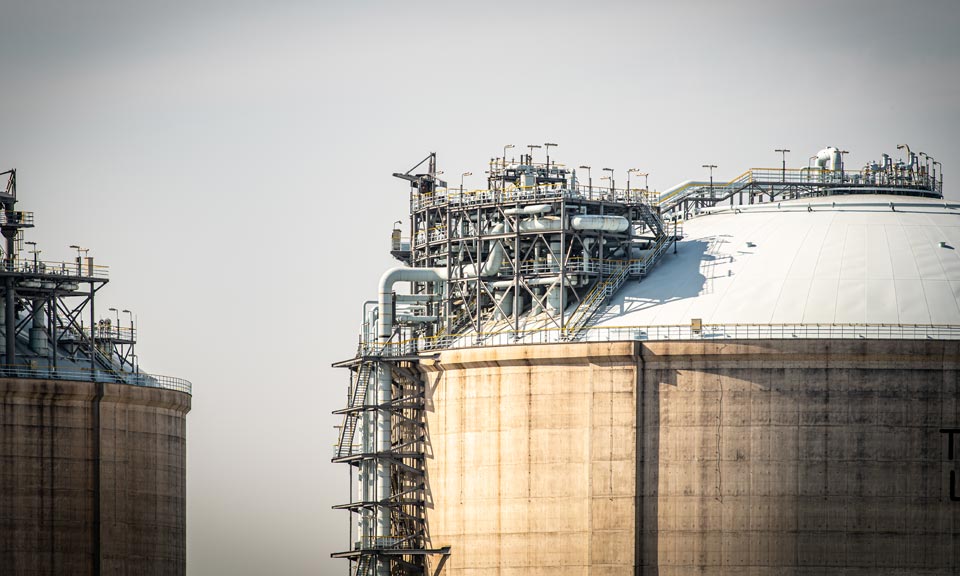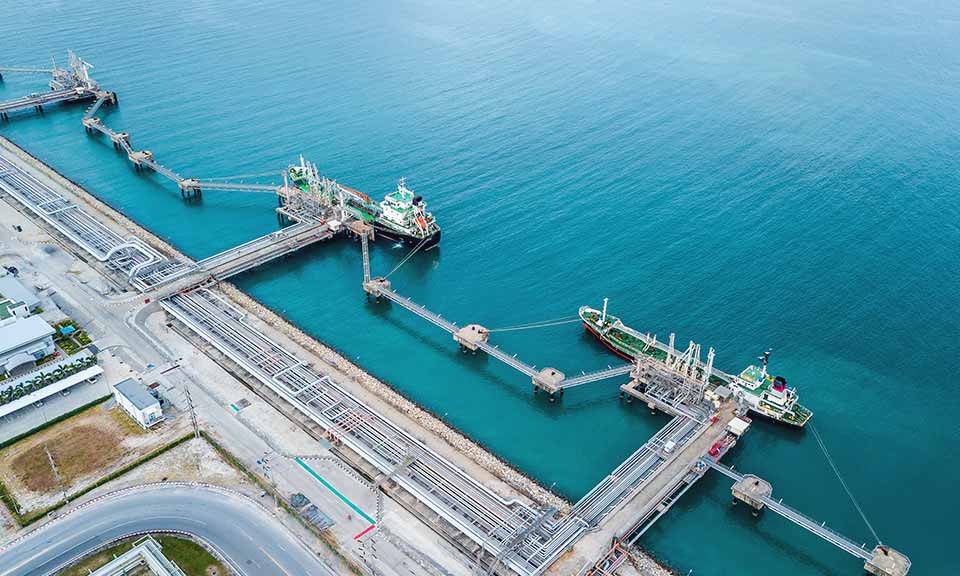The LNG games: Changing market dynamics make for intriguing World Cup fixtures

An alternative view of the 2022 FIFA World Cup in Qatar would cast the competition as the world's first LNG games.
The competition, hosted by Qatar – whose wealth is tied to the super-cool fuel – pitches some of the world's biggest LNG buyers like Japan and South Korea against export heavyweights Australia and the US.
Will we see the host nation regain its title as world's biggest exporter LNG, as projected for 2022 by S&P Global Commodity Insights? And how will market entrant Germany get on as it seeks to secure LNG cargoes to replace Russian gas at almost any cost?
The fixture list throws up some intriguing match-ups.
England and Wales both face the US in the group stages in very uneven LNG match-ups.
The US has doubled LNG exports since the last World Cup in 2018 and could repeat the feat to 2026 when it will co-host the tournament with Canada and Mexico. Once the Freeport terminal in Texas resumes operations later this year, the US is set to become the world's biggest exporter.
US LNG supplies to the UK have risen strongly so far in 2022, with volumes totaling 7.9 Bcm of gas equivalent in the first nine months, according to S&P Global data. US exports to the UK stood at 4 Bcm for the whole of 2021.
The UK has large LNG import capacity at its three operational terminals – two in Wales (Dragon and South Hook) and one in England (Isle of Grain) – totaling more than 35 million mt/year. According to a media report, a new 10 Bcm US-UK LNG import deal could be announced.
Defending champion and Europe's biggest LNG importer France kicks off against Australia, which is at risk of losing its LNG export crown to Qatar.
Australia led global LNG exports in 2020 and 2021, but has no significant expansion planned beyond the under-construction Pluto T2 terminal.
France, meanwhile, faces its own energy crisis this winter due to record-low nuclear availability requiring power imports from LNG-rich markets like Spain and England. Its demand for LNG is forecast to fall once Germany's LNG infrastructure is up and running and France's 56-strong reactor fleet returns to normal operation.
LNG import champ Japan faces LNG newcomer Germany in its opening match.
Germany's Uniper and Japan's largest power generator JERA already agreed to find ways to optimize their LNG portfolios, including the swapping of destination-free cargoes. This could potentially see Uniper's Australian LNG cargoes diverted to Japan and JERA's US LNG supply to Europe to reduce transport days, costs and risks.
JERA has already diverted six cargoes to Europe at the request of the Japanese government, the EU and the US. However, there is no new commitment by Japan to divert surplus LNG to Europe for this winter.
Meanwhile, Germany is on track to commission a first floating LNG terminal before the final in Qatar after Berlin chartered five FSRUs for deployment on its northern coast.
RWE has secured its first LNG cargo for December delivery from the UAE.
No Qatar LNG supply deal has been finalized yet, but Berlin has been vocal on its aim to secure long-term supply arrangements with the Qataris.
In total, Germany plans to have some 30 Bcm/year of LNG gas import capacity infrastructure ready next summer, replacing over half its Russian gas.
Gas pioneer Netherlands is to phase out production at Europe's biggest gas field Groningen, while Qatar plans a major expansion of its offshore North Field to feed more mega LNG trains.
Related infographic: Where do Qatar's LNG exports go?
The Groningen closure will make the Netherlands more dependent on LNG via Rotterdam's Gate terminal and the new Eemshaven import terminal, which the Dutch developed in record time.
Off the pitch, a key development is a plan by the European Commission for a new gas price assessment including LNG as it sees the TTF, trading at a premium to LNG prices, no longer reflecting Europe's new gas supply landscape.
On the pitch, the Netherlands and neighbor Belgium are among talented teams that have never won a World Cup.
South Korea, the K in Platts JKM, again qualified and hopes to repeat its success when it co-hosted the 2002 World Cup with Japan.
Last time, South Korea's shock win over Germany saw the world champs exit in the group stages.
This time South Korea faces Portugal, one of Europe's best supplied markets with its own LNG terminal, sharing a common market with Iberian neighbor Spain and its six LNG terminals.
Things get more serious in Qatar with the knock-out stages from Dec. 3.
Like football, LNG is a global game where South American giants Brazil and Argentina expected to play key roles. Brazil, which has not won a World Cup since 2002, has become a major importer of LNG. Argentina's last World Cup success dates back to 1986, but it hopes to reverse not only its football fortunes but also LNG flows, swinging from imports to exports via its Vaca Muerta field – potentially the second largest shale gas resource on earth.
Two huge players, meanwhile, are missing in Qatar: China and Russia. Russia is the world's fourth biggest LNG exporter, while China was the biggest importer in 2021.
China's drop in demand due to COVID-19 restrictions is the biggest overall change to the 2022 global LNG supply-demand balance, according to S&P Global.
Europe's new hunger for LNG has sharply lifted global LNG prices and prices in Asia, traditionally the premium market, against those in Europe.
European gas prices soared to all-time highs this summer, but a mild start to winter eased price pressure amid reports of LNG tankers queuing up on Europe's shores.
The lack of Russian pipeline gas, however, means Europe still faces a deficit going into 2023.
The DES Northwest Europe LNG marker, assessed by Platts, part of S&P Global, for December is at $26.24/MMBtu, while Europe's gas benchmark TTF maintains a premium. The Platts JKM for December was last assessed at $28.27/MMBtu Nov. 18, S&P Global pricing data showed.
With Takeo Kumagai, Claudia Carpenter, Stuart Elliot, James Tavener, Lawrence Toye and Harry Weber
News
Japan's largest power producer tests ammonia as new fuel Energy transition highlights: Our editors and analysts bring together everything you need to know about the industry this week, from renewables to storage to carbon prices. JERA -- Japan's largest power generation company and one of the world’s largest power utilities --started testing ammonia cofiring at one of its largest thermal power plants this week. The project paves the way for the use of ammonia in the power sector on a commercial scale that has never been done before. Currently, ammonia is a largely a feedstock for fertilizer production with some of it going into chemicals. However, ammonia can be combusted with zero carbon emissions and it is one of the pathways being explored for the transportation of hydrogen as it has existing trade flows that can be expanded. These factors allow ammonia to become as an energy transition fuel. JERA started testing ammonia cofiring at its 1 GW No. 4 coal-fired unit at Hekinan thermal power plant in central Japan from April 1, to be carried out through June using about 40,000 mt of ammonia. The 20% cofiring of ammonia is expected to be the world's first at a large commercial coal-fired power plant and is part of a four-year long pilot project. JERA has pledged to commercialize its ammonia cofiring power generation by 2030 and use 100% ammonia as fuel in the 2040s for its 2050 carbon neutrality target. Japan sees great potential in ammonia as a CO2 zero-emission fuel as the country targets to cut its greenhouse gas emissions by 46% by FY 2030-31 from FY 2013-14 levels and achieve carbon neutrality by 2050 . Price of the week: Meanwhile, the price of emission allowances in China’s national compliance carbon market hit a new record on March 29 of Yuan 90.66/mtCO2e ($12.78/mtCO2e), increasing 8.1% week on week, according to Shanghai Environment and Energy Exchange. The steady increase in Chinese carbon prices has been attributed to bullish sentiment and looming deadlines for meeting emissions obligations. Editor’s pick: Premium and free content SPGlobal.com Germany’s SHS launches green hydrogen tender for Saarland steel plants German steel producer Stahl-Holding-Saar has launched a tender to buy up to 50,000 mt of locally produced renewable hydrogen for its Dillinger and Saarstahl plants in Saarland, the company said March 26. SHS and its subsidiaries are due to produce up to 3.5 million mt/year of green steel from 2027/28. The move follows a tender from Thyssenkrupp for large volumes of clean hydrogen for its Duisburg plant in Germany from 2028. Platts Connect New open-source tool aims to inform on environmental impact of hydrogen The Open Hydrogen Initiative released March 25 an open-source tool for determining the carbon intensity of hydrogen as some industry members work to harmonize measurement methodologies. This new tool allows for the calculation of the carbon intensity of hydrogen production at the facility level based on the operational parameters of the facility and its supply chains, “capturing the nuances” of a project’s emissions, OHI Executive Director Zane McDonald Manchin, oil and gas groups urge flexibility, better coordination on methane fee Delays in implementing a fee on oil and gas system methane emissions and new greenhouse gas reporting rules are unfair to regulated companies and run counter to congressional intent, Senate Energy and Natural Resources Chairman Joe Manchin, Democrat-West Virginia, told the Environmental Protection Agency March 26. TES gets tariff, third-party exemption for German LNG, e-natural gas terminal Tree Energy Solutions has secured an exemption from tariff and third-party access regulation for its planned “e-LNG” import terminal at the Green Energy Hub in Wilhelmshaven from the German network regulator BNetzA. BNetzA has exempted the 15-Bcm/year terminal, which will import LNG before switching to green hydrogen-based “electric natural gas” (e-NG), for 20 years from the start of the operations.

News
Europe is entering its "gas summer" with prices back at what could be considered normal levels and with gas storage stocks in robust health. Another mild winter and weak demand have left the EU's gas storage sites filled to 59% of capacity, while demand in the EU and UK is set for a 3.7% year-on-year decline in Q2 2024, according to forecasts from S&P Global Commodity Insights. Meanwhile, electricity demand across ten core markets is forecast to rise 1.7% with Europe's power markets entering spring in the best supply shape since 2020. Solar output is forecast to exceed gas-fired power generation for the first time in Q2. Carbon prices are expected to show more resilience finding stability just above Eur60/mtCO2e after EU Allowances fell close to three-year lows. The European Commission is expected to release 2023 EU ETS verified emissions data on April 3 with S&P Global analysts forecasting a drop of 11% year-on-year. Read the full feature: Bearish Q2 signals hold sway for European gas, power markets (subscriber content) Click here to see the full-size infographic

News
The sharp fall in Russian pipeline gas supplies to Europe through 2022 and the EU’s decision to diversify its gas imports away from Russia has prompted a major increase in European LNG imports and a large-scale expansion of LNG regasification capacity. The EU, UK and Turkey saw a combined 60% year-on-year increase in imports in 2022 and intake kept pace in 2023, with some 125.5 million mt (173 Bcm) of LNG delivered last year, marginally lower than the 127.6 million mt in 2022, S&P Global Commodity Insights data showed. The expansion of Europe’s import capacity is also set to continue, with more floating capacity additions expected in Germany in 2024 and Greece having taken the first LNG into its new Alexandroupolis FSRU in February. While US dominance over European LNG imports endures, Russia and Qatar are both still key supply sources, and Algerian LNG exports to Europe rose by some 22% year-on-year in 2023.

News
Two years since Russia launched its full-scale invasion of Ukraine -- helping to trigger arguably the most serious gas crisis in Europe’s history -- market dynamics are much changed, with supply sources and routes majorly altered. With the majority of Russian pipeline deliveries halted, only a handful of countries still import piped gas from Russia’s Gazprom, among them Austria, Slovakia, Hungary and non-EU Serbia. And although Russian LNG supplies to Europe remain relatively robust, they still account for only a small share of Europe’s overall gas imports. Now, with the EU giving member states the right to restrict Russian imports at the national level and Austria looking to speed up an exit from Russian gas, the remaining Russian volumes in Europe face an uncertain future. The EU has already seen its Russian gas and LNG imports plummet, falling from 155 Bcm in 2021 to 80 Bcm in 2022 and to 43 Bcm last year, according to European Commission data. In its place, Europe is importing significantly more LNG, while traditional pipeline suppliers -- such as Norway, Algeria and Azerbaijan -- are doing their best to maintain high levels of exports. Norway’s pipeline exports to Europe hit a new record monthly high in December last year. EC efforts The EU’s energy commissioner Kadri Simson acknowledged Feb. 15 that Russia’s invasion of Ukraine had created the worst energy crisis “in decades” for the EU. “But two years later, we can say that [Russian President Vladimir] Putin’s attempt to divide and blackmail us on energy has failed,” Simson said. The EC claims much of the success in responding to Russia’s weaponization of energy, upping its diplomatic efforts to secure alternative supplies, introducing mandatory storage filling and encouraging 15% demand reductions. In reality, market signals and the weather played as big a part in ensuring supply was able to meet demand through 2022, 2023 and into 2024. Related feature: Russia defiant two years into war reshaping global energy Prices rose sufficiently high through 2022 -- hitting new record levels in August that year -- to price out some demand, to attract increased LNG cargoes and to incentivize maxed out Norwegian supply. Mild winters in both 2022/23 and 2023/24 also meant gas stocks remained at historically high levels, keeping a lid on prices. On Feb. 23, Platts -- part of S&P Global Commodity Insights -- assessed the TTF front-month price at just Eur23.30/MWh, a far cry from its record high of almost Eur320/MWh in August 2022. But analysts are still cautious. “Two years on from the Russian invasion and benchmark prices are back to ‘normal’ levels. But we have not reached a new steady state,” according to Michael Stoppard, global Gas Strategy lead at S&P Global Commodity Insights. “While higher LNG imports from the US and elsewhere have covered for almost half of lost Russian pipeline gas, a bigger factor is sharply lower European demand,” Stoppard said. “Some gas demand has gone forever through factory closures or more efficient processes, but most will return. The market may be under-estimating how much demand will come back,” he said. Russian future Question marks also remain about whether Russian gas could regain its lost market share at some point in the future. Gas analyst Jonathan Stern from the Oxford Institute for Energy Studies is doubtful. “The era of 30+% share of Russian gas is over and will not return, whatever the outcome of the war and whoever presides in the Kremlin,” Stern said. “Individual countries may continue to import gas from Russia, but Europe’s gas and energy map has changed fundamentally,” he said. Stern added that the major unresolved gas question concerned the remaining long-term Russian gas contracts with European buyers. These, he said, “cannot be wished away by politicians” and remain a legal and contractual “elephant in the room”. European gas traders, meanwhile, see consumption trends as key to the future of Russian gas in Europe. “It’s all about the demand -- if gas demand destruction continues we can avoid Russian gas,” a Switzerland-based trader said. A Netherlands-based trader said that with industrial demand being particularly price-sensitive, the loss of “cheap” Russian pipeline gas would continue to impact consumption. “The bottom line is that the need for gas comes from the price we get it at,” the trader said. Alternative options Russia itself has limited options for diverting its gas, with the majority of the volumes that used to be piped to Europe now thought to be shut in. Currently Russian pipeline gas to Europe is restricted to flows entering Ukraine at the Sudzha interconnection point and deliveries via the European string of TurkStream. A total of around 80 million cu m/d currently flows into Europe by pipeline, but half of this could be lost when Russia and Ukraine’s transit deal expires at the end of 2024. Russian Deputy Prime Minister Alexander Novak said in January that Russia was ready to continue supplying gas to Europe via any available route, including through Ukraine. But, he said, Moscow had yet to see any desire from its counterparties for talks on the issue, while Kyiv has repeatedly ruled out engaging with Russia on talks over transit. Putin also repeated his claim in his interview with Tucker Carlson earlier this month that Russia was still ready to supply gas to Europe via the undamaged Nord Stream 2 string. However, the pipeline operator was never certified by the German authorities and so the line cannot flow gas. In the meantime, Gazprom is looking to raise exports to China and planning to lock in long-term supply deals with its Central Asian neighbors, such as Kyrgyzstan, Kazakhstan, and Uzbekistan. But these supplies would not be able to offset the lost European deliveries. And what seems certain in Europe is that -- at least at the political level -- there is very little desire to see Russian gas come back in any significant way to the market.